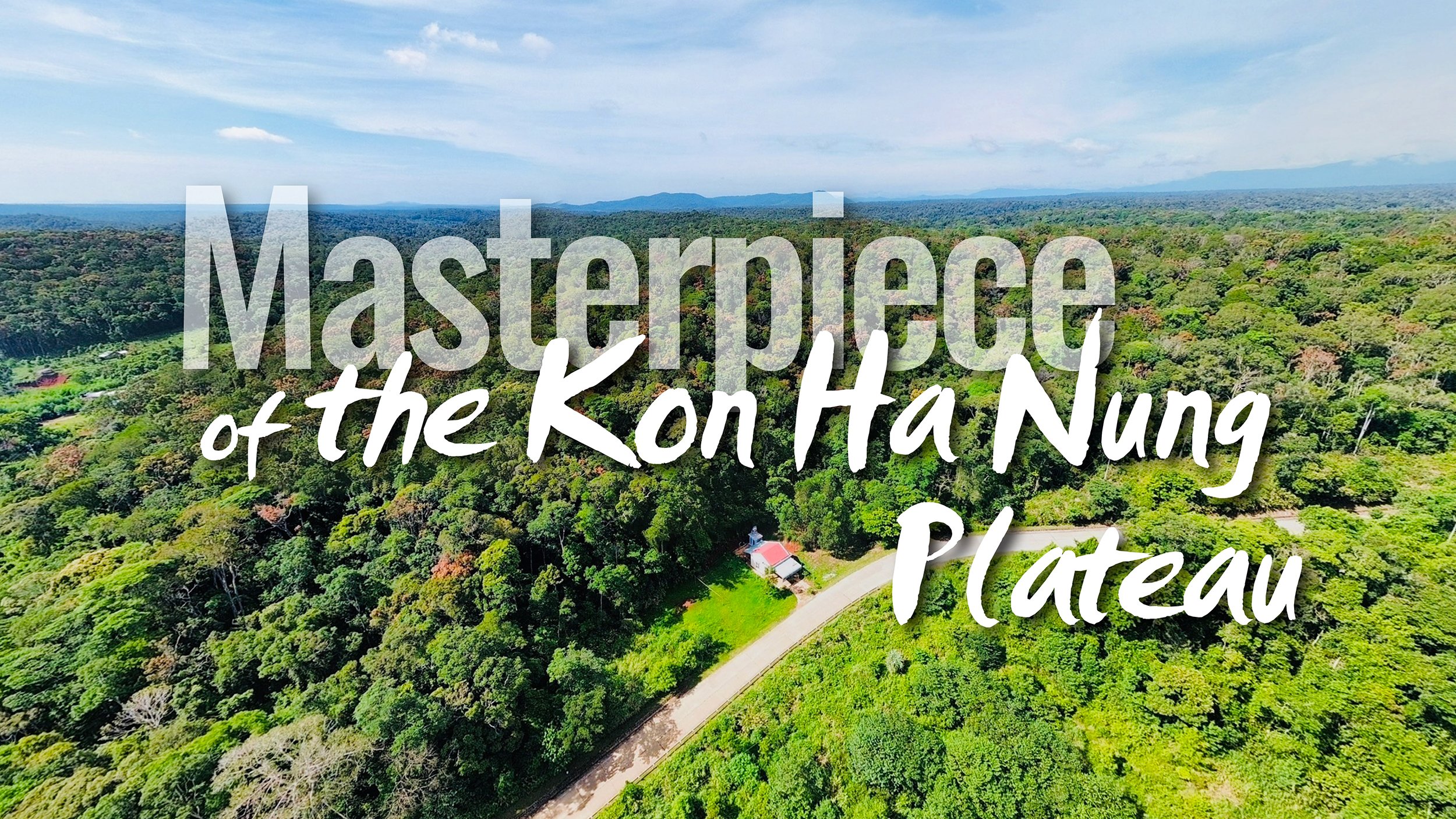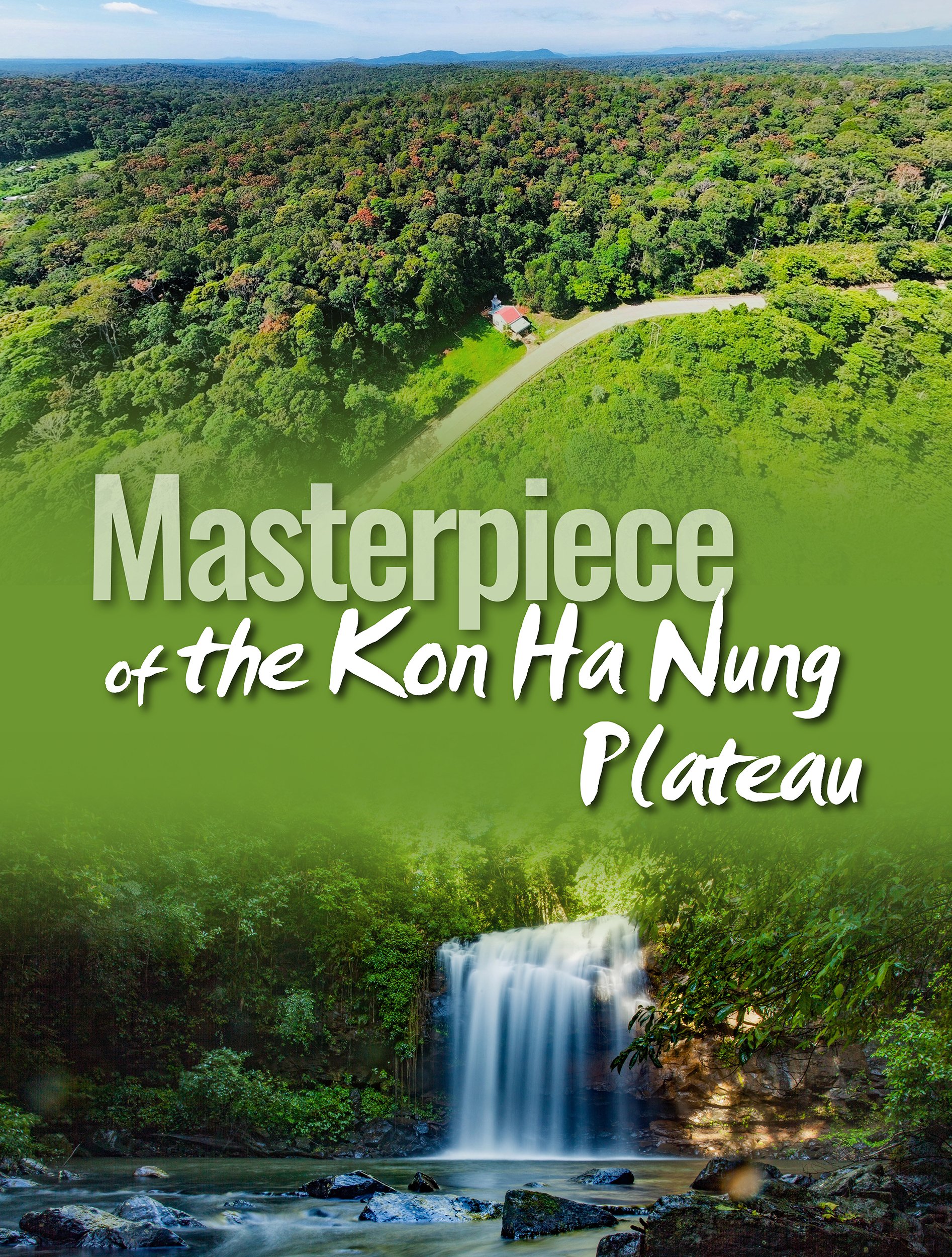In 2021, the International Coordinating Council of UNESCO’s Man and the Biosphere Program designated the Kon Ha Nung Plateau (Gia Lai province) as a World Biosphere Reserve. Covering over 413,500 hectares, the plateau comprises two core areas: the entirety of Kon Ka Kinh National Park and Kon Chu Rang Nature Reserve. The buffer zone encompasses a forested region extending from Chu Pah district to Kbang district (Gia Lai), bordering Kon Ray and Kon Plong districts (Kon Tum province), Ba To district (Quang Ngai province), and An Lao and Vinh Thanh districts (Binh Dinh province).
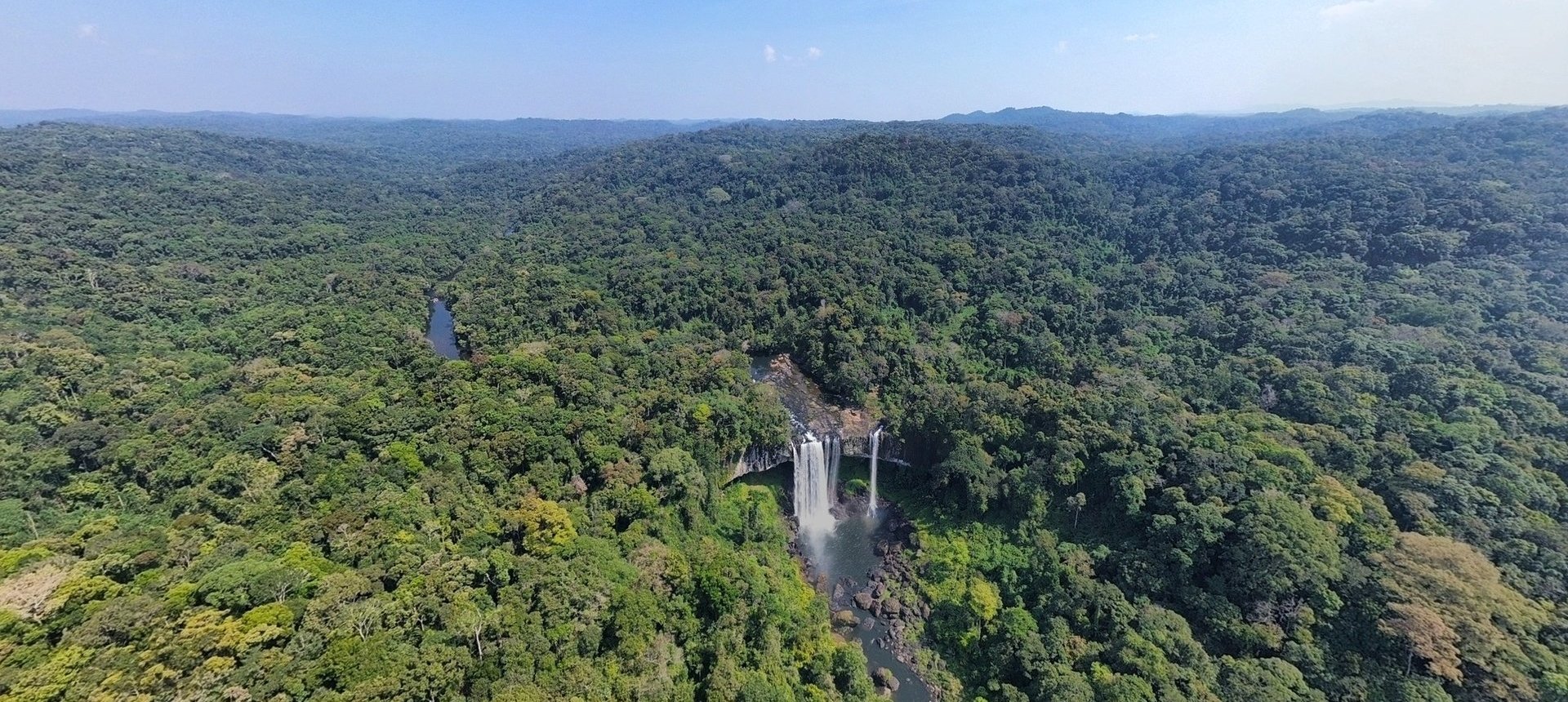

Kon Ha Nung Plateau is also refered to as the “Roof of Indochina,” with its highest peak exceeding 1,700 meters in Kon Ka Kinh National Park. Generations of ethnic communities have lived here with the majority belonging to the Bana ethnic minority, who predominantly reside in villages near the forest. Additionally, nine other ethnic minorities – mainly migrants from northern provinces who arrived after 1975 – constitutes a small fraction of the total population.
The core area of the Kon Ha Nung Plateau consists of Kon Ka Kinh National Park and Kon Chu Rang Nature Reserve. This region is one of Vietnam’s most biodiverse, home to many rare and endemic species of flora and fauna.
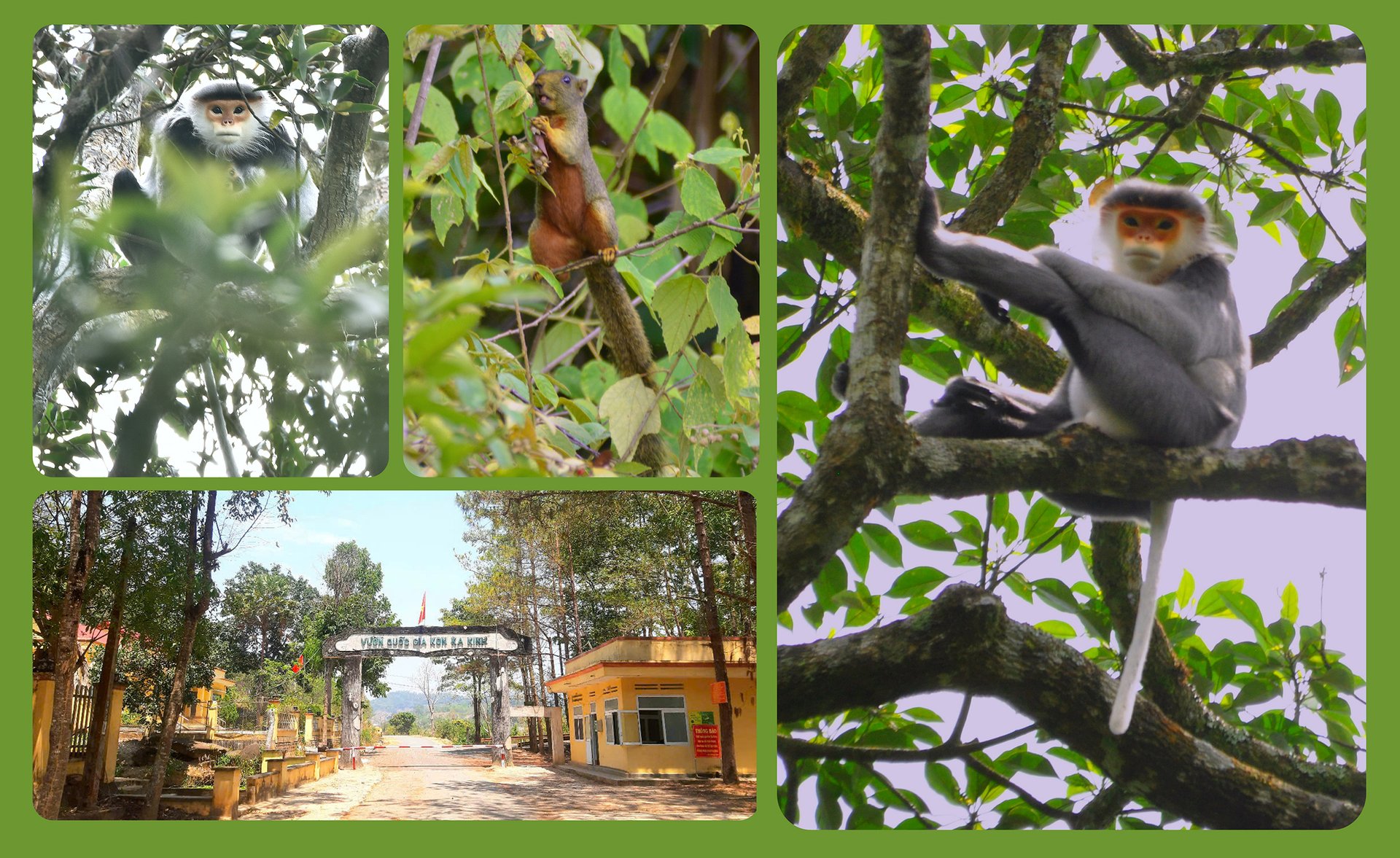


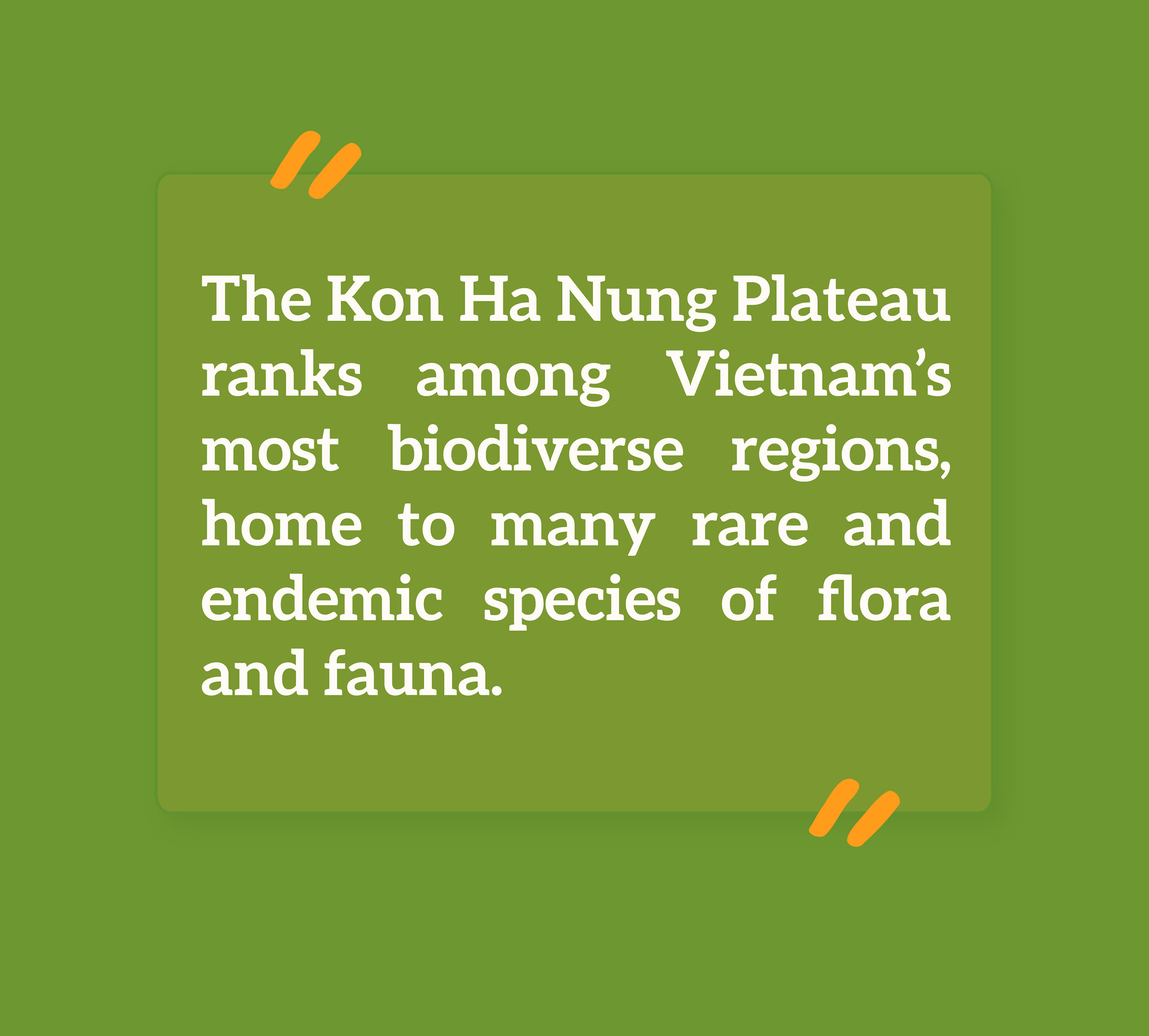
Kon Ka Kinh National Park not only encompass vast forests with the unique characteristics of the Central Highlands, but it also preserves an intact ecosystem of evergreen broadleaf tropical forests, coniferous trees, shrubs, and grasslands – rich in biodiversity. In particular, the plant species in Kon Ka Kinh National Park is very diverse, with more than 1,700 species of higher plants and 91 species of lower plants. Based on comprehensive assessments, a list of 138 important higher plant species has been identified. These include threatened species as well as endemic plants unique to the region and the country.
The fauna of Kon Ka Kinh National Park is rich with a total of 876 species, including 555 vertebrate species and 321 invertebrate species. Research shows that the mammal fauna of Kon Ka Kinh National Park has high conservation value, with 34 rare species listed in the Vietnam Red Book and 30 species listed in the Government’s decree on the management of endangered and rare forest animals. Notably, this area has endemic species discovered such as Kon Ka Kinh laughingthrush, Truong Son muntjac, grey-shanked douc langur...
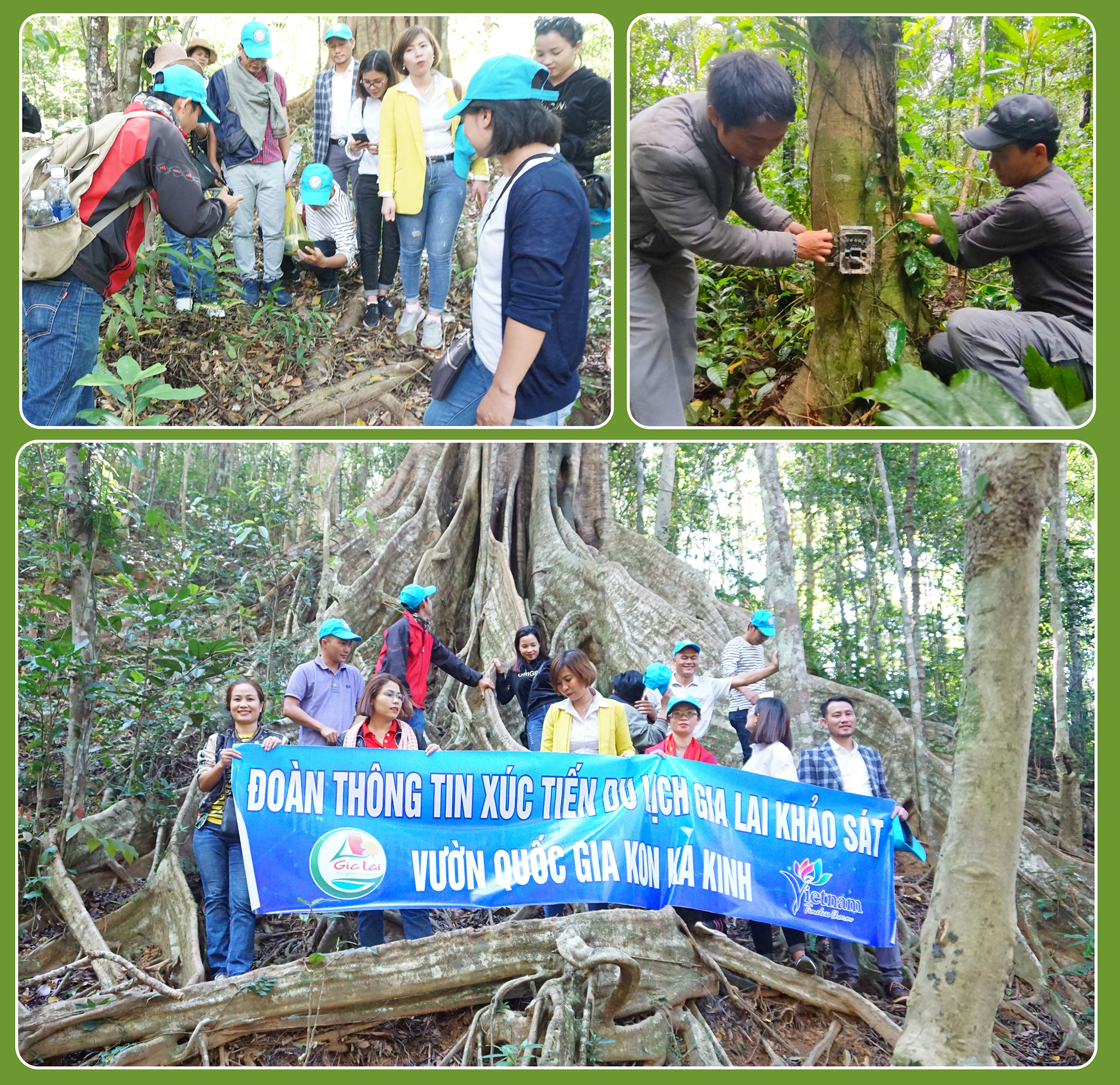
Meanwhile, Kon Chu Rang Nature Reserve has identified 863 plant species, including 22 species listed in the Vietnam Red Book and 7 species in the World Red Book. 508 species have been recorded, with 64 classified as priority conservation species at both national and international levels, such as the Tonkin snub-nosed monkey, binturong, flying civet, Asiatic black bear, silver pheasant, black-headed babbler, and king cobra. As for invertebrates, 211 species have been identified in Kon Chu Rang, including 7 species listed for national conservation priority.
Beyond its wealth of rare and endangered flora and fauna, the Kon Ha Nung Plateau is also home to geological formations over 2 million years old, with well-preserved craters and traces of human habitation dating back thousands of years.
These factors have contributed to Kon Ha Nung Plateau designation as Vietnam’s 11th Biosphere Reserve in the world network. This prestigious title is not only a great honor for the Vietnamese Party Committee, Government, and people of Gia Lai but also represents international recognition of the region’s biodiversity and the ongoing efforts to conserve nature and promote sustainable development.
The establishment of the Biosphere Reserve will contribute to the conservation of landscapes, ecosystems, species and genetic resources through strict protection of the core zones of Kon Ka Kinh National Park and Kon Chu Rang Nature Reserve. These two core zones will create a biodiversity corridor, maintaining overall integrity of the current tropical forest ecosystems of the Central Highlands in particular and the whole country in general.
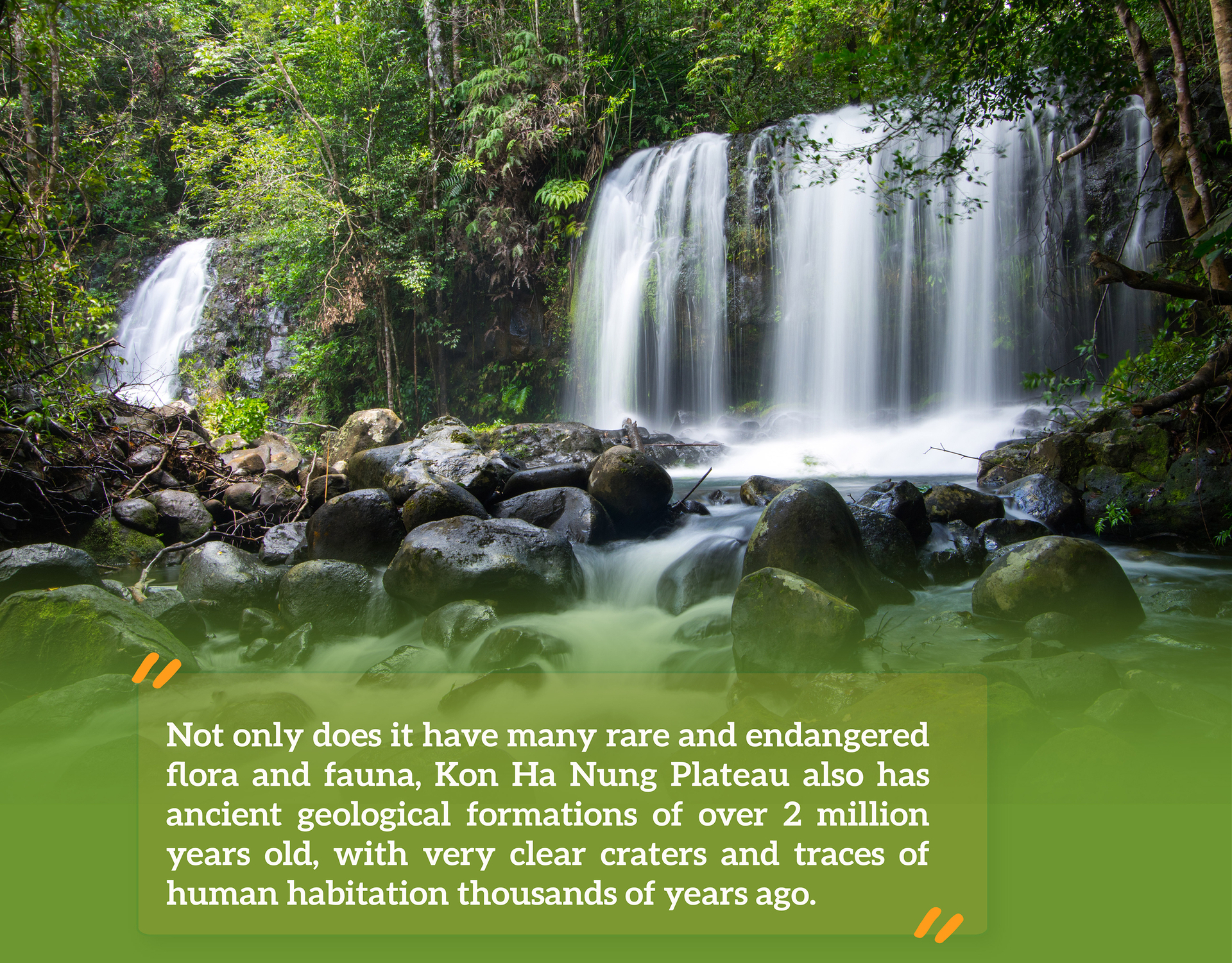

Following the recognition of the Kon Ha Nung Plateau as a World Biosphere Reserve, Gia Lai province has placed significant emphasis on improving the livelihoods of communities living in the buffer zone, particularly ethnic minorities. In recent years, the province has introduced various initiatives to generate income from forest resources. Notably, the policy of allocating forests to local communities for protection has proven highly effective, transforming the awareness and mindset of ethnic minorities regarding conservation.
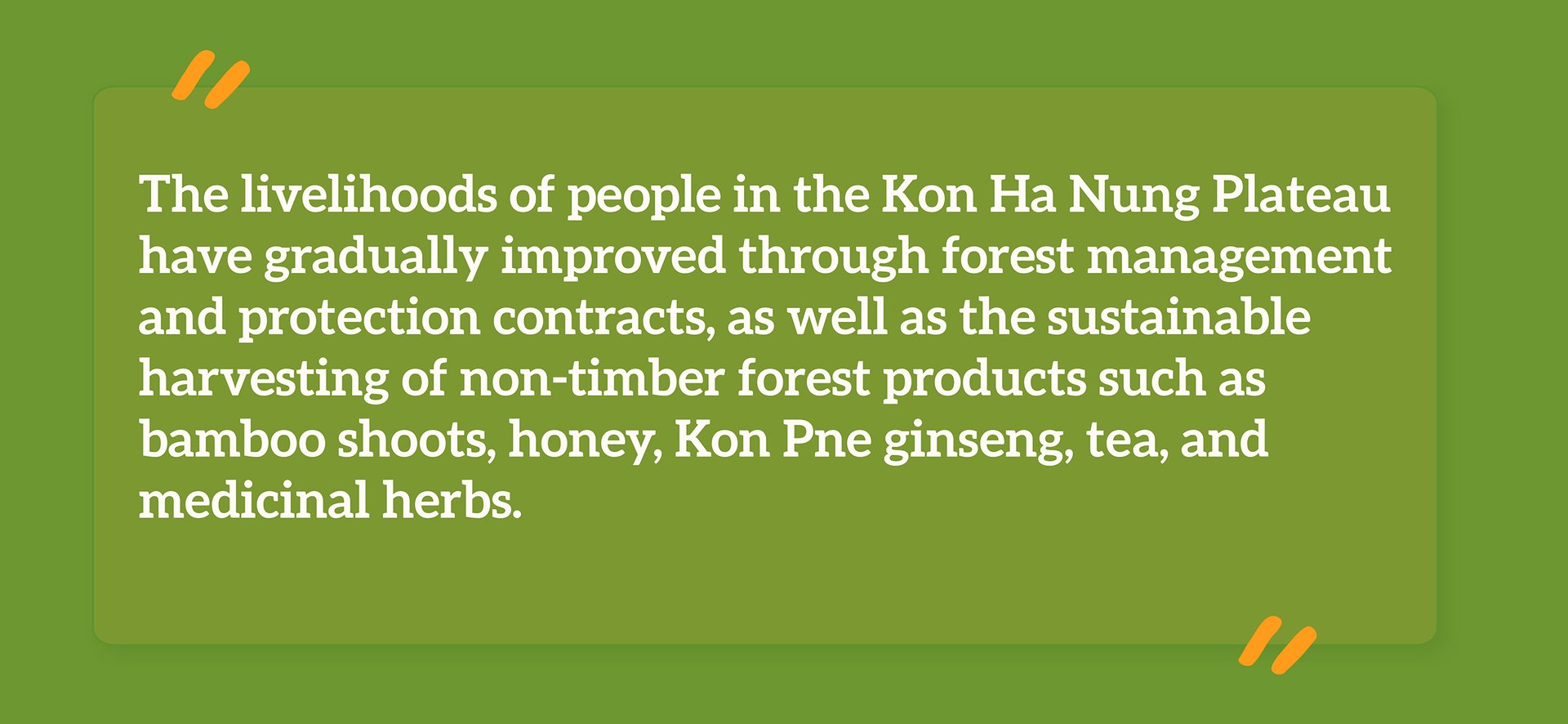
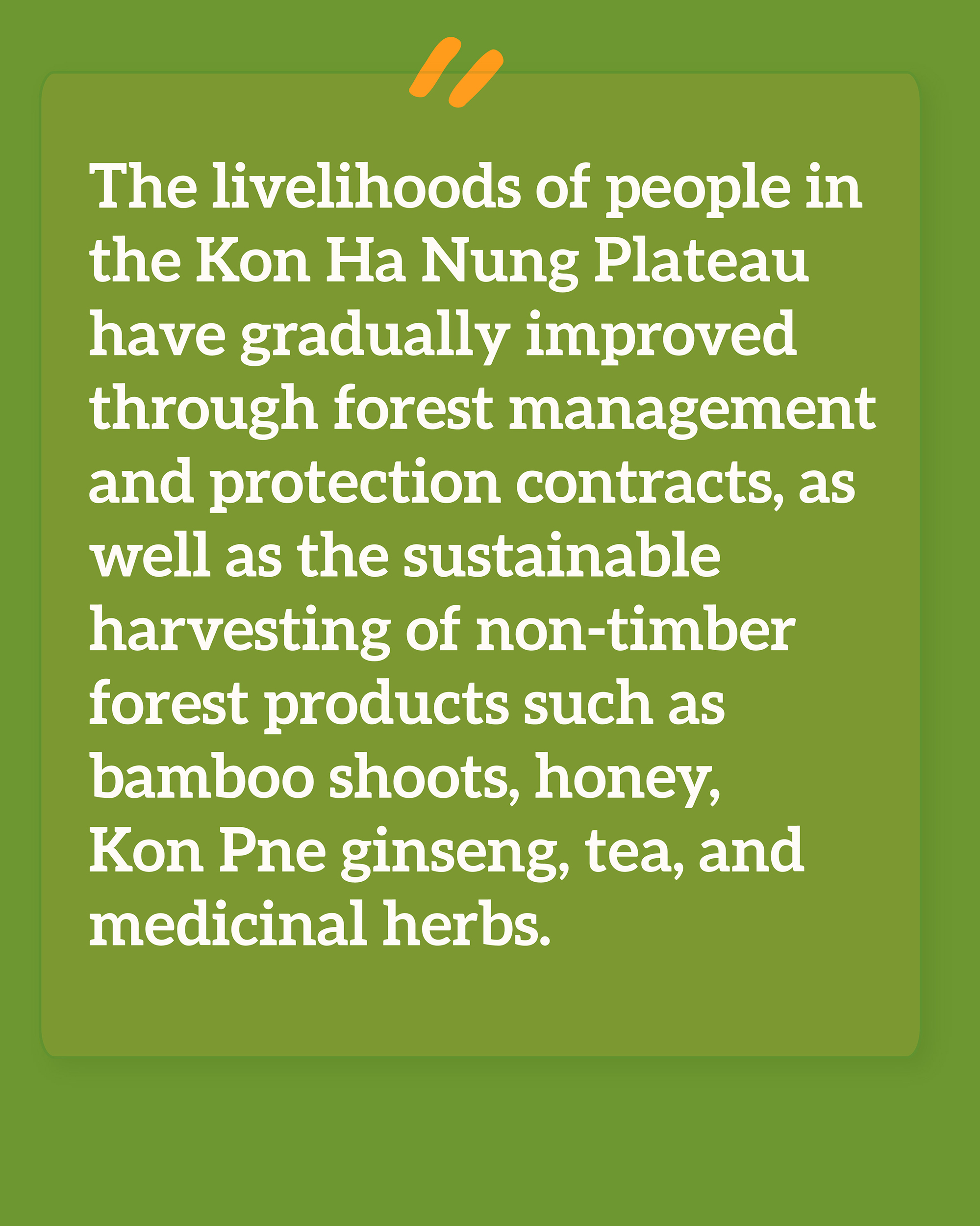
One example is Kon Ka Kinh National Park, which has allocated nearly 19,000 hectares of forest to 17 village communities across three districts: Kbang, Mang Yang, and Dak Doa. The Forest Environmental Service Fund has provided financial support for forest protection efforts, contributing over 12–13 billion VND to local communities.
According to Mr. Ngo Van Thang, Director of Kon Ka Kinh National Park, the buffer zone support program has supplied local people with seedlings and livestock, including corn, hybrid acacia, and cattle. Additionally, the program has provided production machinery, fertilizers, irrigation systems, storage facilities for agricultural products, and clean water pipelines to benefit residents in 18 buffer zone villages across Dak Doa, Mang Yang, and Kbang districts.
Furthermore, under the “Small Grant Program on Conservation and Sustainable Management of ASEAN Heritage Parks,” Kon Ka Kinh National Park has partnered with various organizations to implement sustainable agricultural livelihood models in the buffer zone. These small-scale projects have fostered knowledge-sharing, enhanced capacity-building, and expanded community-driven livelihood models based on local resources. Additionally, revolving funds have been established in multiple communes, serving as a foundation for scaling up these initiatives.
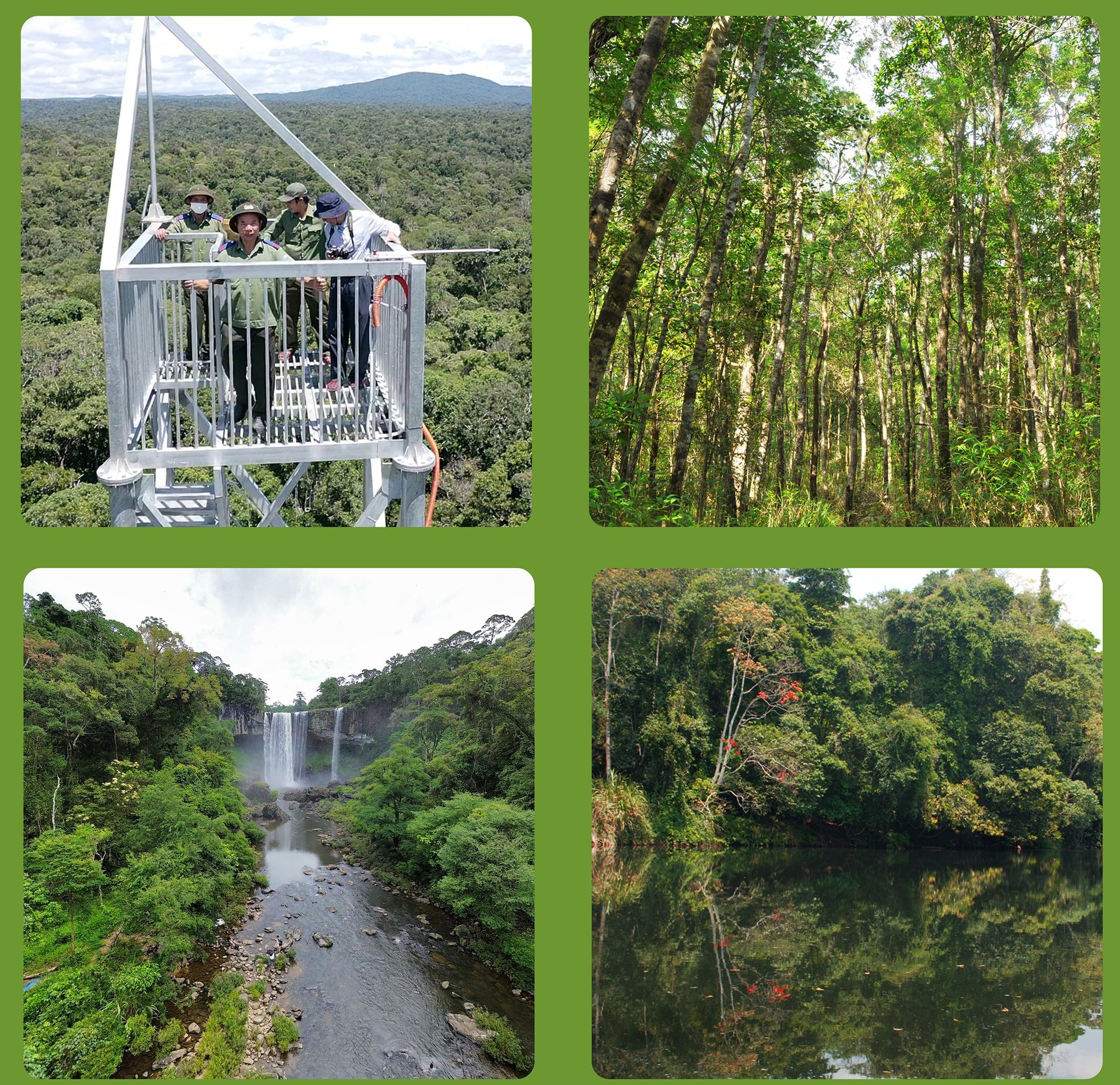
According to Mr. Thang, in the coming time, Kon Ka Kinh National Park will effectively implement the sustainable forest management plan for the period 2021-2030 in forest protection management, biodiversity conservation, scientific research, ecotourism, and support for the buffer zone community. In particular, the Park will focus on patrolling, surveillance, removing traps, and communicating to people not to hunt or keep in captivity the rare and precious wild animals, helping to protect biodiversity; organizing the contracted force to coordinate with the forest protection force to patrol effectively, helping to reduce pressure on the specialized force of the National Park. At the same time, the Park will raise awareness and responsibility of the contracted people in forest protection work.
Similarly, in Kon Chu Rang Nature Reserve, all households of 17 household groups and 1 community in 5 buffer zone villages are contracted to manage and protect forests with an area of over 4,000 hectares.
Mr. Nguyen Hong Quan, the Deputy Director in charge of Kon Chu Rang Nature Reserve, said that the motto is relying on people in the buffer zone to manage and protect forests, to promptly prevent forest encroachment. At the same time, implementing forest management and protection at the grassroots level, resolutely not allowing deforestation and planting of long-term industrial crops in the reserve.
“Therefore, up to now, Kon Chu Rang Nature Reserve has effectively resolved the issue of disputes and overlapping of forest land with people in the buffer zone, shifting from confrontation with people to dialogue and partnership. The unit’s greatest success is collaborating with households with land disputes to protect forests for the reserve”, Mr. Quan shared.
Mr. Nguyen Van Hoan, Deputy Director of the Department of Agriculture and Environment of Gia Lai province, stated that the livelihoods of people in the Kon Ha Nung Plateau have gradually improved through forest management and protection contracts, as well as the sustainable harvesting of non-timber forest.
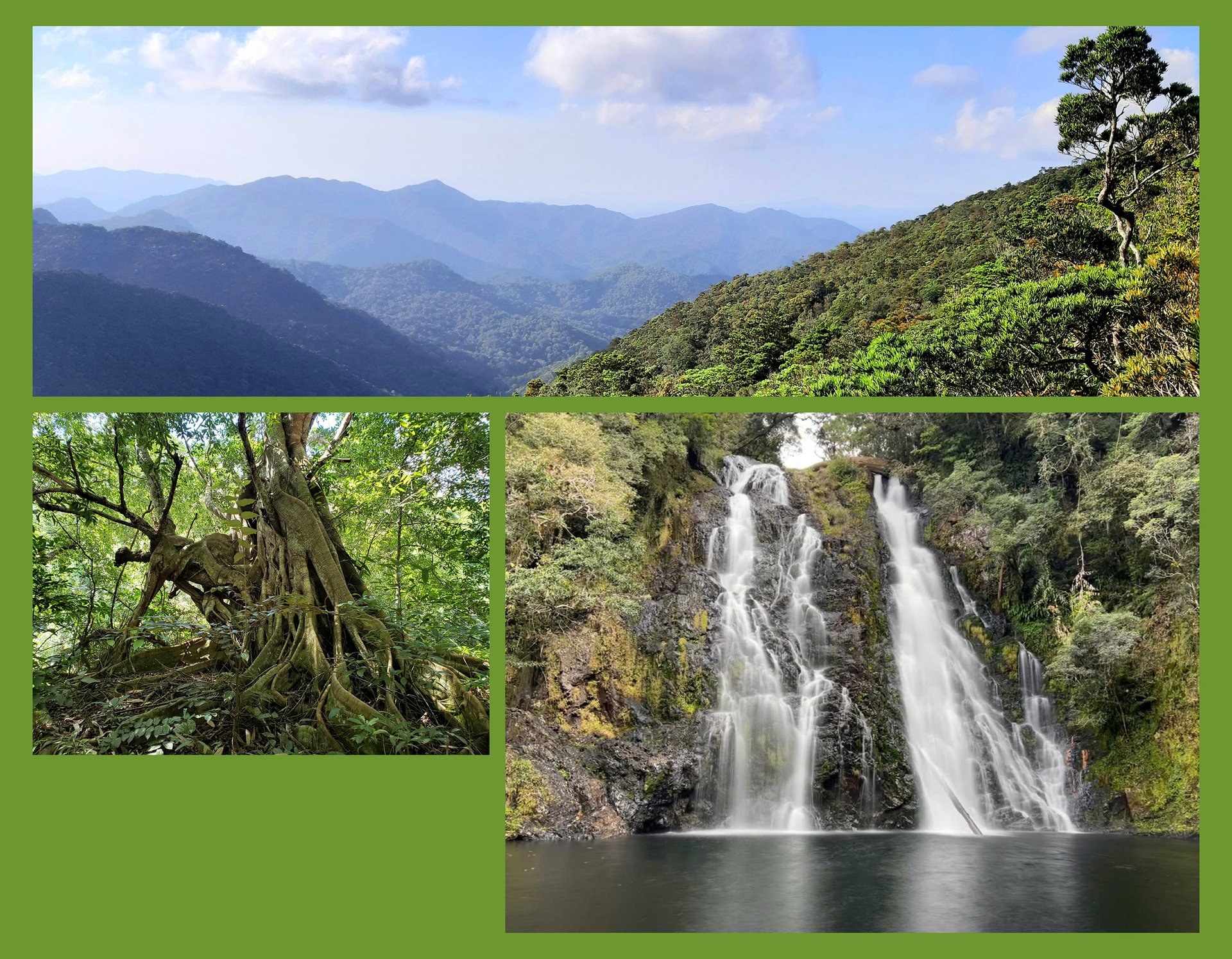

Box: With renowned tourist attractions such as Chu Dang Ya Volcano, the White Rock Peak of Kon Ka Kinh National Park (1,748m), and spectacular waterfalls like K50 Waterfall, Three-Tier Waterfall, and Bat Cave Waterfall, ecotourism in the region is expected to see significant growth in the future.
Beyond its rich forest ecosystem, the Kon Ha Nung Plateau is distinguished by its breathtaking pristine landscapes, creating exciting opportunities for sustainable community-based ecotourism development.
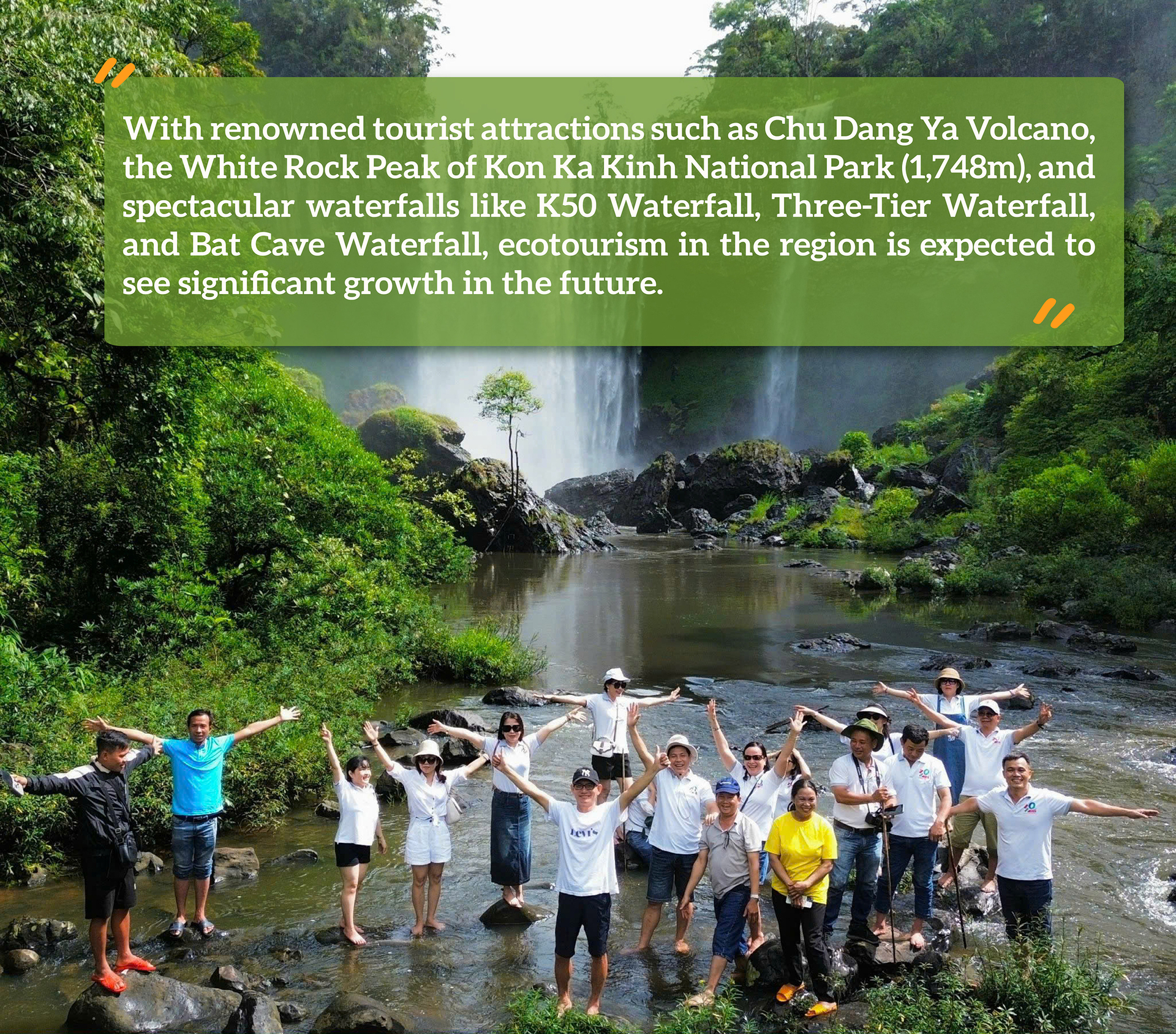
Notably, Kon Chu Rang Nature Reserve boasts stunning natural scenery, with picturesque rivers, streams, and waterfalls such as the Con River, Da Stream, and Dac Phan Stream. These waterways give rise to majestic waterfalls, including the Three-Tier Waterfall, Fifty-Tier Waterfall, and Trai Dam Waterfall. Towering 20 to over 50 meters high, these waterfalls cascade down throughout the year, forming white foam and mist, creating a cool and refreshing atmosphere.
Notably, the area surrounding the waterfalls features numerous caves with unique formations, nestled within pristine primeval forests that are exceptionally rich in biodiversity. This landscape is ideal for developing various forms of outdoor tourism, including sightseeing, adventure tourism, relaxation, and wellness retreats.
Mr. Nguyen Hong Quan, Deputy Director in charge of Kon Chu Rang Nature Reserve, emphasized that these tourism activities allow visitors to reconnect with nature in a fresh, cool environment, appealing to a wide range of tourists from different backgrounds.
However, despite its immense ecotourism potential, Kon Chu Rang Nature Reserve still faces significant challenges. Mr. Quan noted that the ecotourism project for the reserve has yet to be approved, posing a major challeng for development.
“Currently, domestic and international demand for ecotourism in Kon Chu Rang is very high, yet the lack of a legal framework for visitor access places immense pressure on the conservation area. Additionally, infrastructure investments are lacking, hindering not only tourism development but also the organization of conferences, seminars, and scientific research activities”, said Mr. Quan.
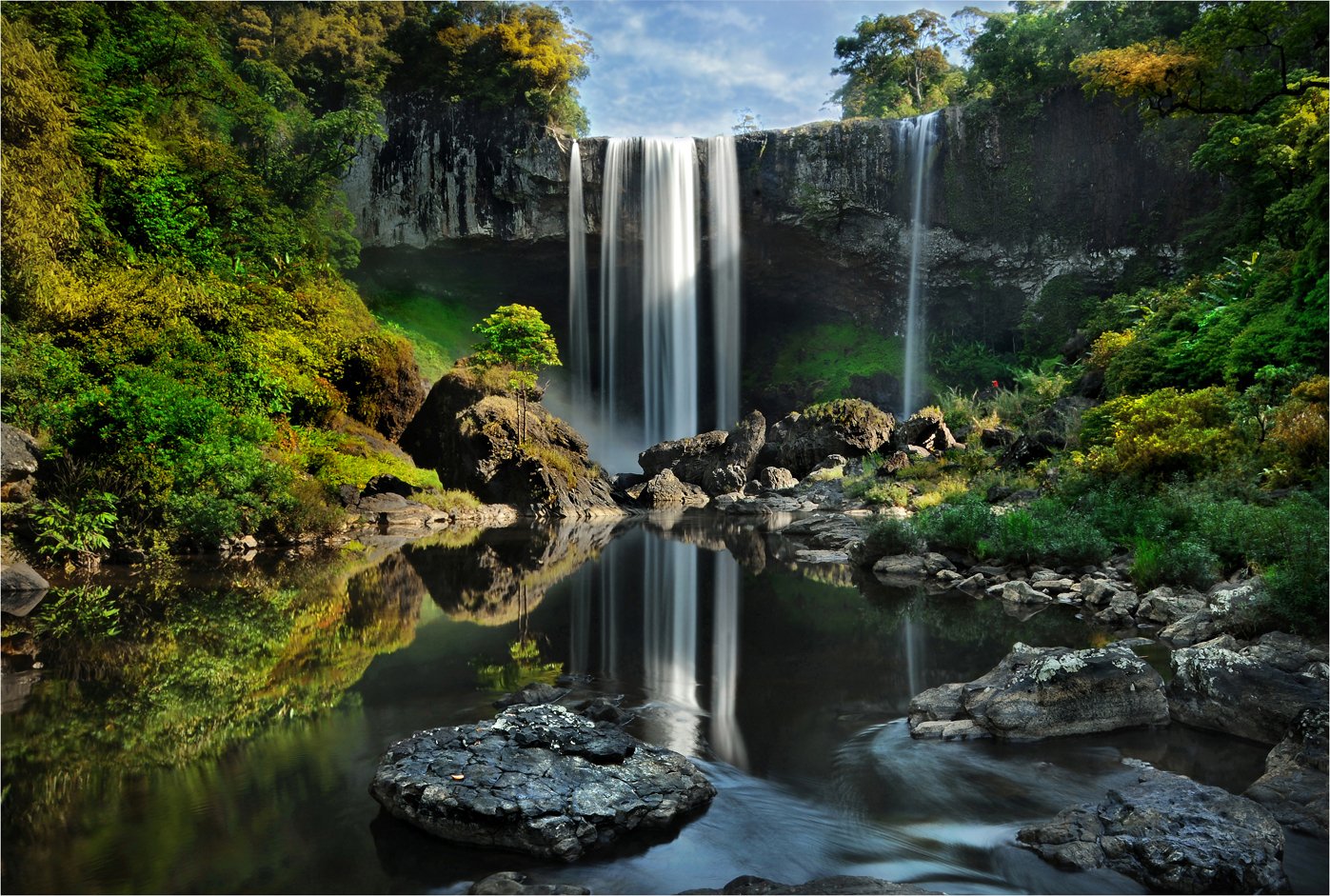
According to him, developing ecotourism is essential for creating jobs and increasing incomes for communities in the buffer zone, thereby reducing pressure on forest resources. At the same time, ecotourism can generate revenue for forest conservation efforts, ensuring a sustainable source of funding for forest protection and biodiversity preservation. This approach represents the key solution for sustainable forest management within the conservation area.
Mr. Nguyen Van Hoan, Deputy Director of the Department of Agriculture and Environment of Gia Lai province, shared that both Kon Ka Kinh National Park and Kon Chu Rang Nature Reserve are currently working on an ecotourism project, which will be submitted for official approval. With renowned natural attractions such as Chu Dang Ya Volcano, the White Rock Peak of Kon Ka Kinh National Park (1,748m), and magnificent waterfalls like K50 Waterfall, Three-Tier Waterfall, and Bat Cave Waterfall, ecotourism in the Kon Ha Nung Plateau is expected to flourish in the near future, serving as a driving force for sustainable tourism development.


